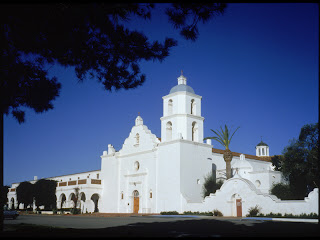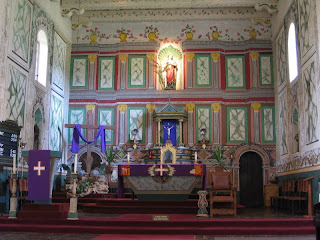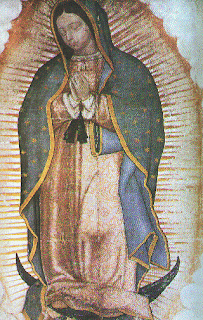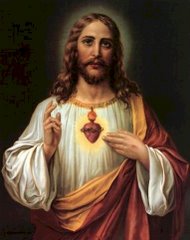Taken form the Vatican Information Service:CATHOLIC-ORTHODOX DOCUMENT ON THE NATURE OF THE CHURCH
VATICAN CITY, NOV 15, 2007 (VIS) - Made public today was the final document of the plenary assembly of the Joint International Commission for Theological Dialogue between the Catholic Church and the Orthodox Church. The meeting was held in the Italian city of Ravenna from October 8 to 14 under the presidency of Cardinal Walter Kasper, president of the Pontifical Council for Promoting Christian Unity, and His Excellency Ioannis, metropolitan of Pergamo.
The title of the final document is: "Ecclesiological and Canonical Consequences of the Sacramental Nature of the Church. Ecclesial Communion, Conciliarity and Authority."
Commenting on the 46-paragraph-long text in an interview with Vatican Radio, Cardinal Kasper affirmed that "the document speaks of the tension between authority and conciliarity (or synodality) at the local (i.e., diocesan), regional and universal levels. The important development is that for the first time the Orthodox Churches have said yes, this universal level of the Church exists and also at the universal level there is conciliarity, synodality and authority; this means that there is also a Primate; according to the practice of the ancient Church, the first bishop is the bishop of Rome."
"However," the cardinal continued, "we did not talk of the privileges of the bishop of Rome, we merely indicated the praxis for future debate. This document is a modest first step and as such it gives rise to hope, but we must not exaggerate its importance.
"The next time," added the president of the pontifical council, "we will have to return to the role of the bishop of Rome in the universal Church during the first millennium. Then we must also talk of the second millennium, of Vatican Councils I and II, and this will not be easy; the road is very long and difficult."
The cardinal also commented on the fact that the delegation from the Russian Orthodox Church had abandoned the plenary assembly, explaining that "there was an inter-Orthodox problem over the recognition of the autonomous Church of Estonia" about which Moscow and Constantinople take different views.
"This is an inter-orthodox question," he reiterated, "and we cannot interfere; yet we are extremely sad and concerned because it is important to us that the Russian Orthodox Church should also participate in our future dialogue. Hence we cannot interfere but we wish to ask Moscow and Constantinople to do their best to find a solution, a compromise.
"If they wish," the cardinal concluded, "we can also facilitate this solution, either at the bilateral level between Moscow and Constantinople, or at the pan-Orthodox level, but there is not doubt that we want the Russian Orthodox Church to anticipate. It is a very important Church, we do not want to dialogue without the Russians and we wish to work to achieve this aim."
CON-UC/RAVENNA DOCUMENT/KASPER VIS 071115 (470)
VATICAN CITY, NOV 15, 2007 (VIS) - Made public today was the final document of the plenary assembly of the Joint International Commission for Theological Dialogue between the Catholic Church and the Orthodox Church. The meeting was held in the Italian city of Ravenna from October 8 to 14 under the presidency of Cardinal Walter Kasper, president of the Pontifical Council for Promoting Christian Unity, and His Excellency Ioannis, metropolitan of Pergamo.
The title of the final document is: "Ecclesiological and Canonical Consequences of the Sacramental Nature of the Church. Ecclesial Communion, Conciliarity and Authority."
Commenting on the 46-paragraph-long text in an interview with Vatican Radio, Cardinal Kasper affirmed that "the document speaks of the tension between authority and conciliarity (or synodality) at the local (i.e., diocesan), regional and universal levels. The important development is that for the first time the Orthodox Churches have said yes, this universal level of the Church exists and also at the universal level there is conciliarity, synodality and authority; this means that there is also a Primate; according to the practice of the ancient Church, the first bishop is the bishop of Rome."
"However," the cardinal continued, "we did not talk of the privileges of the bishop of Rome, we merely indicated the praxis for future debate. This document is a modest first step and as such it gives rise to hope, but we must not exaggerate its importance.
"The next time," added the president of the pontifical council, "we will have to return to the role of the bishop of Rome in the universal Church during the first millennium. Then we must also talk of the second millennium, of Vatican Councils I and II, and this will not be easy; the road is very long and difficult."
The cardinal also commented on the fact that the delegation from the Russian Orthodox Church had abandoned the plenary assembly, explaining that "there was an inter-Orthodox problem over the recognition of the autonomous Church of Estonia" about which Moscow and Constantinople take different views.
"This is an inter-orthodox question," he reiterated, "and we cannot interfere; yet we are extremely sad and concerned because it is important to us that the Russian Orthodox Church should also participate in our future dialogue. Hence we cannot interfere but we wish to ask Moscow and Constantinople to do their best to find a solution, a compromise.
"If they wish," the cardinal concluded, "we can also facilitate this solution, either at the bilateral level between Moscow and Constantinople, or at the pan-Orthodox level, but there is not doubt that we want the Russian Orthodox Church to anticipate. It is a very important Church, we do not want to dialogue without the Russians and we wish to work to achieve this aim."
CON-UC/RAVENNA DOCUMENT/KASPER VIS 071115 (470)
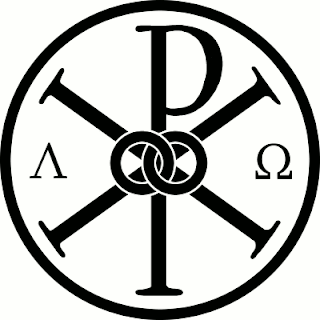

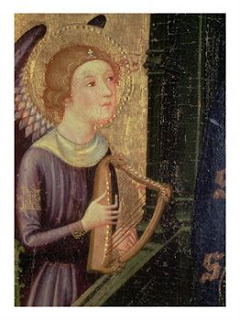


.jpg)

